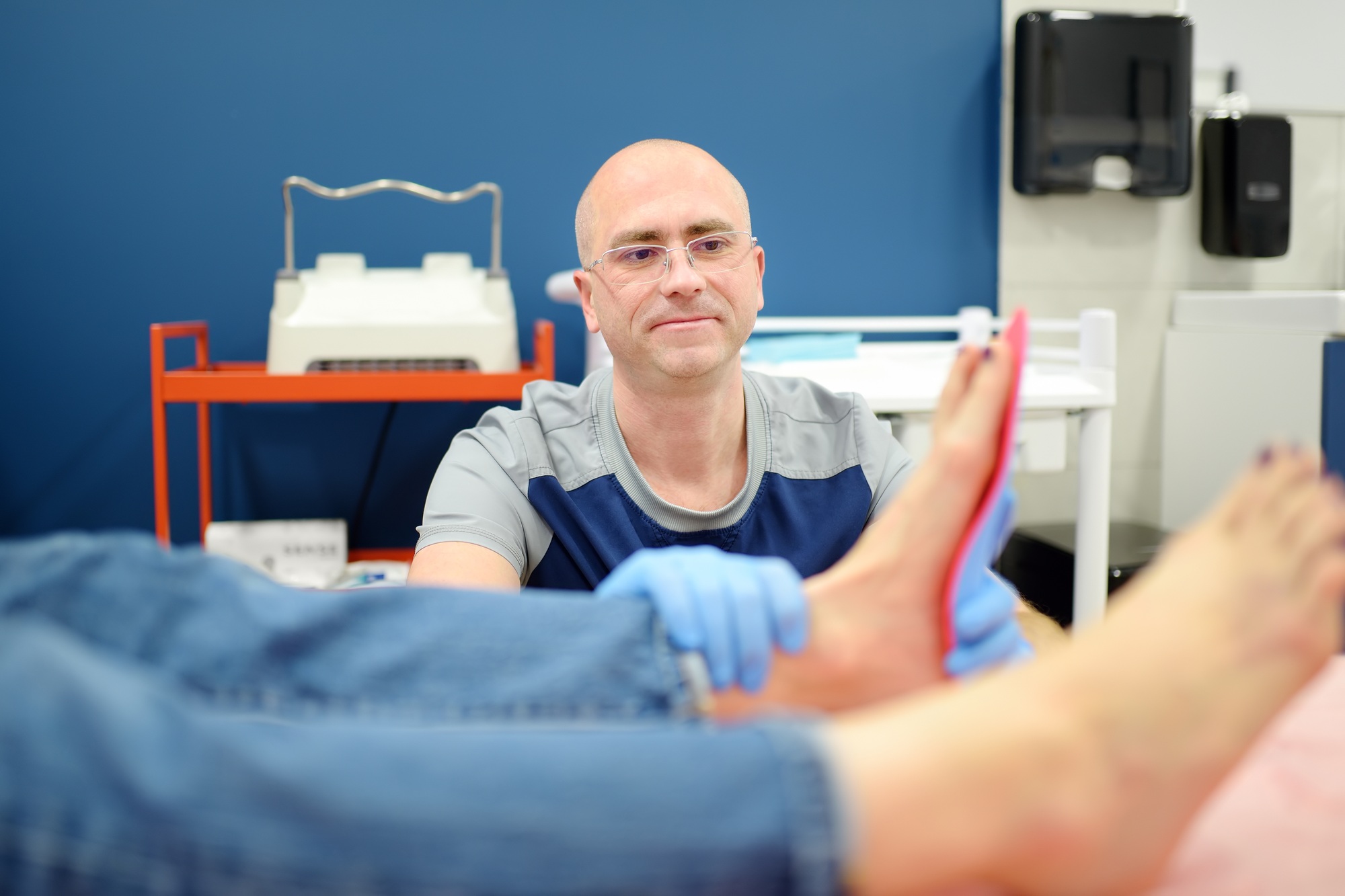Are you tired of living with chronic pain? Do you dream of a life where you can move freely without discomfort? You’re not alone. Millions of people worldwide suffer from orthopaedic conditions that affect their quality of life. But there’s hope! In this article, we’ll explore the top orthopaedic treatments designed to bring you the relief you deserve. Let’s dive in and discover how you can reclaim your life.
Understanding orthopaedic conditions
Before we delve into the treatments, it’s crucial to understand what orthopaedic conditions are. These are disorders of the musculoskeletal system, which includes bones, joints, ligaments, tendons, and muscles. From arthritis to fractures, these conditions can significantly impact your daily life.
This might interest you : What Role Does Proper Hydration Play in Athletic Performance and Recovery?
Common orthopaedic conditions
There are several common orthopaedic conditions that people face. Here are a few:
- Arthritis: This is an inflammation of the joints, often leading to pain and stiffness. There are many types, including osteoarthritis and rheumatoid arthritis.
- Fractures: A break in a bone can occur due to trauma or underlying conditions like osteoporosis.
- Tendonitis: This is the inflammation of a tendon, often caused by overuse or injury.
- Bursitis: Inflammation of the bursae, small fluid-filled sacs that cushion your joints.
- Sprains and strains: These are injuries to ligaments and muscles, often resulting from sudden movements or overuse.
Understanding these conditions is the first step toward finding the right treatment for you.
In the same genre : Top 7 beauty supplements to enhance your natural glow
Exploring top orthopaedic treatments
Now that we’ve covered the basics, let’s explore some of the top orthopaedic treatments available today. These treatments range from non-invasive options to surgical interventions, all designed to help you find relief and regain your mobility.
Non-invasive treatments
Non-invasive treatments are often the first line of defense against orthopaedic conditions. They are less risky and can be highly effective for many people.
Physical therapy
Physical therapy is a cornerstone of non-invasive orthopaedic treatment. It involves exercises and stretches designed to improve strength, flexibility, and overall function. For example, a patient with knee arthritis might engage in exercises to strengthen the muscles around the knee, reducing pain and improving mobility.
Dr. Jane Smith, a renowned physical therapist, states, “Physical therapy not only helps alleviate pain but also empowers patients to take control of their health through regular exercise and movement.“
Medication
Medications can play a crucial role in managing orthopaedic pain. Over-the-counter options like ibuprofen can help reduce inflammation and pain. For more severe cases, prescription medications such as corticosteroids or disease-modifying antirheumatic drugs (DMARDs) might be necessary.
It’s important to consult with your healthcare provider to find the right medication for your specific condition. As Dr. John Doe, an orthopaedic specialist, notes, “Medication can be a powerful tool, but it must be used judiciously and under medical supervision to avoid potential side effects.“
Surgical interventions
When non-invasive treatments are not enough, surgical interventions may be necessary. These procedures can range from minimally invasive arthroscopy to more complex joint replacements.
Arthroscopy
Arthroscopy is a minimally invasive surgical procedure used to diagnose and treat joint problems. A small camera is inserted into the joint through a tiny incision, allowing the surgeon to see and repair damaged tissue. This technique is often used for conditions like meniscus tears in the knee or rotator cuff injuries in the shoulder.
Dr. Emily Johnson, an orthopaedic surgeon, explains, “Arthroscopy has revolutionized orthopaedic surgery by allowing us to perform complex procedures with minimal disruption to the patient’s body.“
Joint replacement
Joint replacement surgery involves removing a damaged joint and replacing it with an artificial one. This procedure is often used for severe arthritis, particularly in the hip and knee. While it’s a more invasive option, it can significantly improve quality of life for those with debilitating joint pain.
According to Dr. Michael Brown, a leading orthopaedic surgeon, “Joint replacement surgery is not just about relieving pain; it’s about restoring function and enabling patients to enjoy activities they love.“
Comparing treatment options
Choosing the right treatment can be daunting. To help you make an informed decision, let’s compare some of the key treatment options in a table:
| Treatment | Pros | Cons | Best For |
|---|---|---|---|
| Physical Therapy | Non-invasive, improves strength and flexibility, empowers patients | Requires commitment, may not be enough for severe cases | Mild to moderate conditions, post-surgical recovery |
| Medication | Quick pain relief, can be used in conjunction with other treatments | Potential side effects, not a long-term solution | Acute pain, inflammation management |
| Arthroscopy | Minimally invasive, quick recovery, effective for specific conditions | Not suitable for all conditions, may require additional surgery | Meniscus tears, rotator cuff injuries |
| Joint Replacement | Significant pain relief, improved function, long-term solution | Invasive, longer recovery time, potential complications | Severe arthritis, joint degeneration |
Practical tips for managing orthopaedic conditions
Living with an orthopaedic condition can be challenging, but there are practical steps you can take to manage your symptoms and improve your quality of life.
Maintain a healthy weight
Excess weight can put additional strain on your joints, particularly in the knees and hips. By maintaining a healthy weight, you can reduce this strain and potentially alleviate some of your symptoms. Consider a balanced diet and regular exercise to achieve and maintain a healthy weight.
Stay active
It might seem counterintuitive, but staying active can help manage orthopaedic conditions. Low-impact exercises like swimming, cycling, or yoga can strengthen the muscles around your joints, providing better support and reducing pain. Remember, it’s essential to consult with your healthcare provider before starting any new exercise regimen.
Use assistive devices
Assistive devices like canes, crutches, or braces can help support your joints and reduce pain. For example, a knee brace can provide stability and reduce the load on a damaged knee. Don’t hesitate to explore these options and discuss them with your healthcare provider.
Practice good posture
Poor posture can exacerbate orthopaedic conditions, particularly in the spine and neck. Make a conscious effort to maintain good posture throughout the day, whether you’re sitting, standing, or walking. Ergonomic adjustments to your workspace can also help.
Manage stress
Stress can worsen pain and inflammation. Techniques like meditation, deep breathing, or even hobbies that you enjoy can help manage stress levels. Consider incorporating these into your daily routine to support your overall well-being.
Real-life success stories
Hearing about others’ experiences can be incredibly inspiring. Here are a few success stories from individuals who have found relief through orthopaedic treatments.
Sarah’s journey with knee arthritis
Sarah, a 55-year-old teacher, had been struggling with knee arthritis for years. The pain was so severe that she considered early retirement. However, after undergoing a successful knee replacement surgery, Sarah’s life changed dramatically. She now enjoys hiking with her family and has returned to teaching full-time. “I never thought I’d be able to move freely again, but this surgery gave me my life back,” Sarah says.
Mark’s recovery from a shoulder injury
Mark, a 32-year-old construction worker, suffered a severe shoulder injury on the job. After months of physical therapy and an arthroscopy procedure, Mark was able to return to work pain-free. “The combination of physical therapy and surgery was life-changing. I’m grateful every day for the care I received,” Mark shares.
Lisa’s experience with physical therapy
Lisa, a 45-year-old accountant, was diagnosed with tendonitis in her wrist. She was initially skeptical about physical therapy but decided to give it a try. After a few months of dedicated exercises and stretches, Lisa’s pain subsided, and she regained full function of her wrist. “I was amazed at how much physical therapy helped. It’s not just about the exercises; it’s about learning to take care of your body,” Lisa reflects.
Orthopaedic conditions can be challenging, but with the right treatment, you can find relief and reclaim your life. From non-invasive options like physical therapy and medication to surgical interventions like arthroscopy and joint replacement, there are numerous paths to better health. Remember to consult with your healthcare provider to find the best treatment for your specific condition. And don’t forget the practical tips and real-life success stories that can inspire and guide you on your journey to recovery.
So, what are you waiting for? Take the first step toward a pain-free life today!











